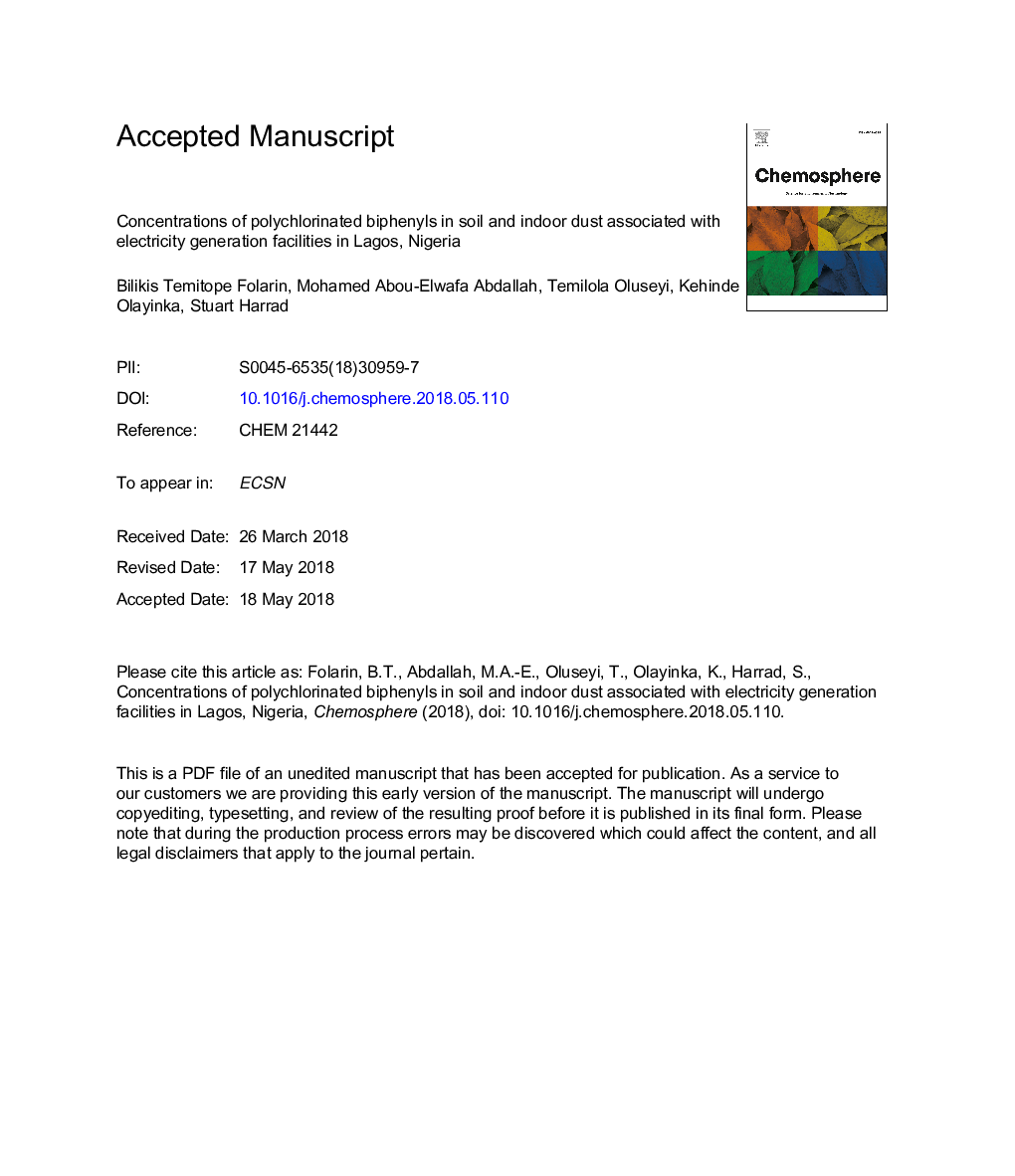| Article ID | Journal | Published Year | Pages | File Type |
|---|---|---|---|---|
| 8850832 | Chemosphere | 2018 | 25 Pages |
Abstract
Concentrations of 7 indicator polychlorinated biphenyls (PCBs) were measured in dust and soil samples from 12 power stations collected over the two major seasons of the Nigerian climate. Median Æ©PCB7 concentrations in soil ranged from 2â¯ng/g for power station A to 220â¯ng/g for power station I; while those in dust ranged from 21â¯ng/g for power station L to 2200â¯ng/g for power station I. For individual congeners, median PCB concentrations ranged from 3.8â¯ng/g for PCB 101 to 52â¯ng/g for PCB 180 in dust, and <0.07â¯ng/g for PCB 28 to 5.9â¯ng/g for PCB 153 in soil. The type of power station activity exerted a significant influence on concentrations of ΣPCB7 in dust and soil (generationâ¯>â¯transmissionâ¯>â¯distribution). Congener patterns in dust and soil samples were compared using principal component analysis (PCA) with those in transformer oil samples from 3 of the power stations studied and with common PCB mixtures (Aroclors). This revealed congener patterns in soil were more closely related to that in the transformer oil than dust. Congener patterns in most samples were similar to Aroclor 1260. Concentrations of PCBs in soil samples close to the transformers significantly exceeded those in soil sampled further away.
Keywords
Related Topics
Life Sciences
Environmental Science
Environmental Chemistry
Authors
Bilikis Temitope Folarin, Mohamed Abou-Elwafa Abdallah, Temilola Oluseyi, Kehinde Olayinka, Stuart Harrad,
